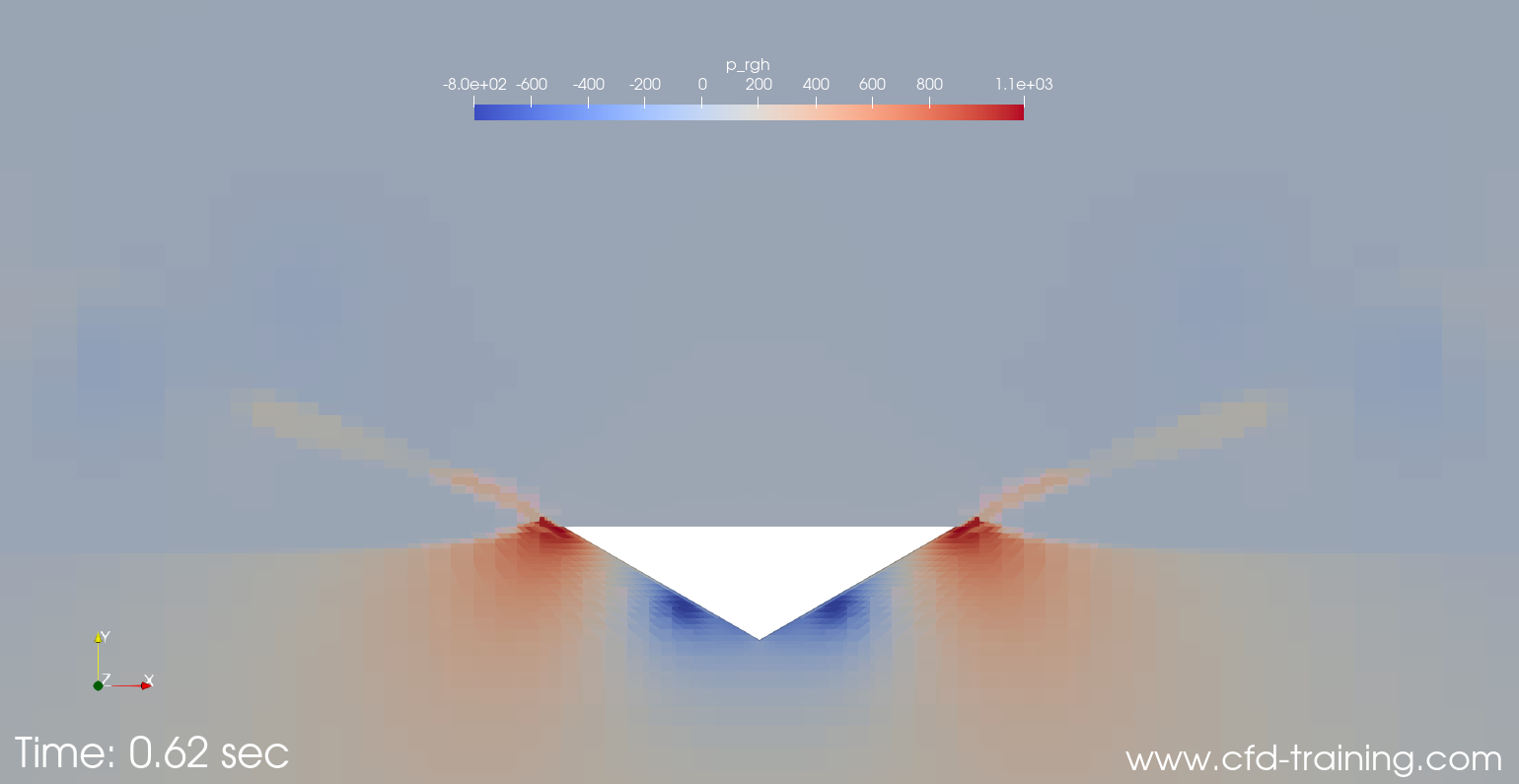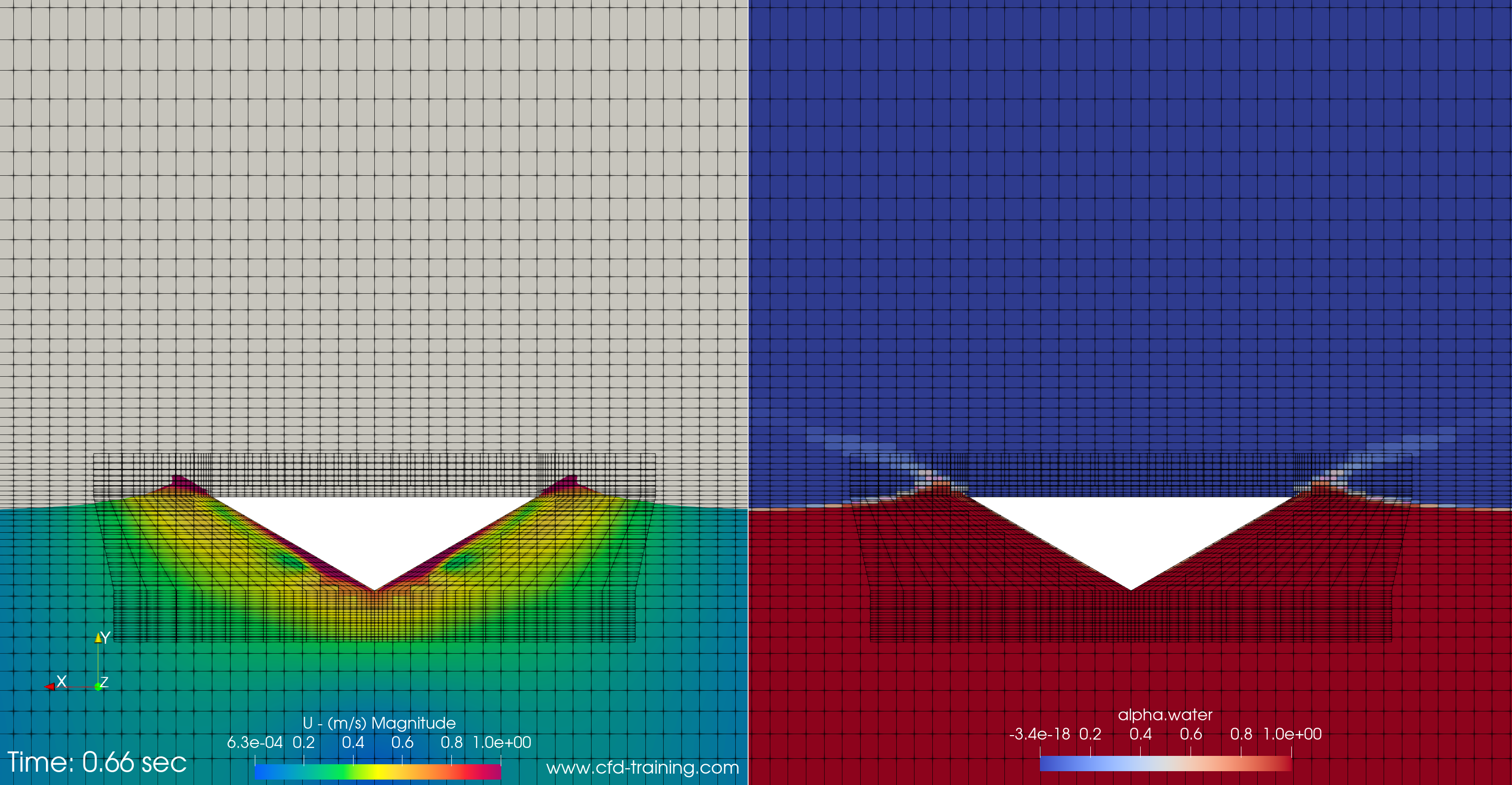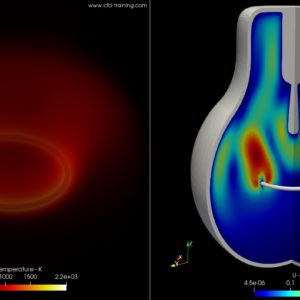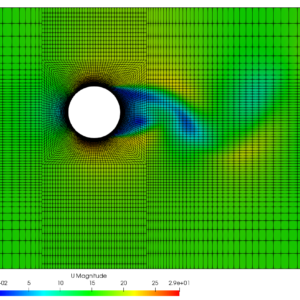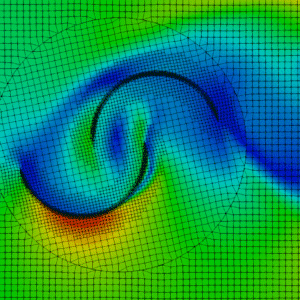Description
This tutorial shows how to use overset mesh techniques with OpenFOAM®. The case study (2D) model the fall of a wedge as in https://www.sciencedirect.com/science/article/abs/pii/S0169598305001036. The movement of the wedge is generated by the 6DOF Module of OpenFOAM® (sixDoFRigidBodyMotion) with one degree of freedom allowed: vertical translation. The mesh overset technique is used to capture solid body movements and is particularly interesting for large displacements, where mesh deformation methods fail.
-
The tutorial uses the overInterDyMFoam solver (interFoam version with the mesh overset technique) introduced since the 1706+ version of OpenFOAM®.
Calculation time:
- Around 10 min on 4 cores
Prerequisites/Information:
-
OpenFOAM®: Tested on versions 2406+. Warning, the tutorial does not work with versions (4.0, 5.0, 6.0, 7.0 etc.) from the OpenFOAM® Foundation (www.openfoam.org).
- The tutorial is designed to run on 4 cores but can be easily modified to be run on the number of core chosen by the user.
-
It is recommended that you use the latest version of OpenFOAM® + to improve the performance of the overset module.
- Paraview (post-processing).
CFD-training does not give any warranty to the numerical results obtained within this tutorial due to the absence of verification or validation.

